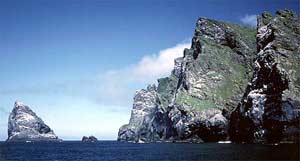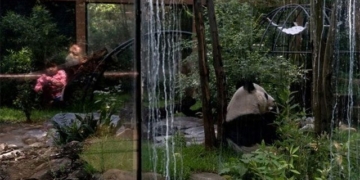 This tiny archipelago is located adrift in the Atlantic Ocean, 160 km off the coast of Scotland. It comprises the remnants of a volcano, with erosion and freezing having created stunning cliffs that rise up to 430 meters high. These are the highest and most spectacular cliffs in Europe.
This tiny archipelago is located adrift in the Atlantic Ocean, 160 km off the coast of Scotland. It comprises the remnants of a volcano, with erosion and freezing having created stunning cliffs that rise up to 430 meters high. These are the highest and most spectacular cliffs in Europe.
The St Kilda ecosystem is a fascinating example of the genetic dispersal of a population of animals that has evolved in isolation. The tiny house mice and the St Kilda wren are unique species found nowhere else in the world.
This archipelago boasts one of the largest seabird populations in the North Atlantic, with over 1 million birds, including  52,000 pairs of northern gannets, 30,000 pairs of fulmars, and 300,000 pairs of puffins. Despite its isolated location and harsh living conditions, St Kilda has been continuously inhabited for 2,000 years. The islanders survived by consuming seabirds and their eggs, as well as weaving wool from the Soay sheep, an ancient breed that has returned to a wild state.
52,000 pairs of northern gannets, 30,000 pairs of fulmars, and 300,000 pairs of puffins. Despite its isolated location and harsh living conditions, St Kilda has been continuously inhabited for 2,000 years. The islanders survived by consuming seabirds and their eggs, as well as weaving wool from the Soay sheep, an ancient breed that has returned to a wild state.
In 1930, the archipelago was designated a “National Nature Reserve“, and in 1986 it was inscribed on the UNESCO World Heritage List. The old village has been restored for the few rare tourists who arrive on the islands in the summer to witness the harsh landscape and wildlife of these remote isles.
















































